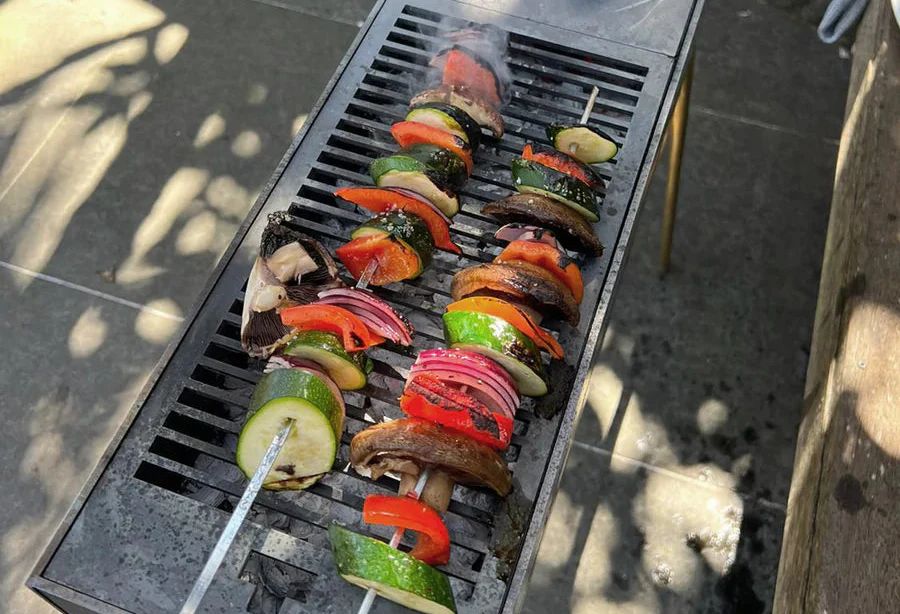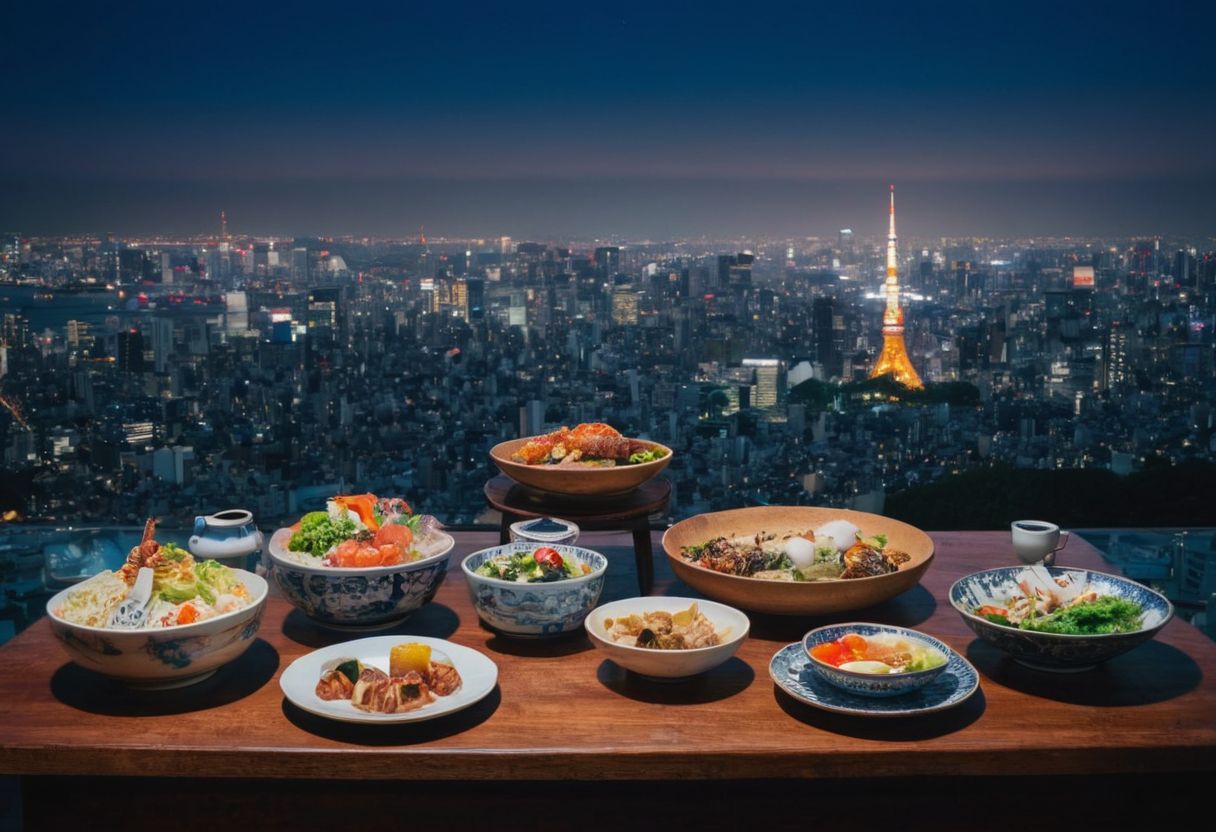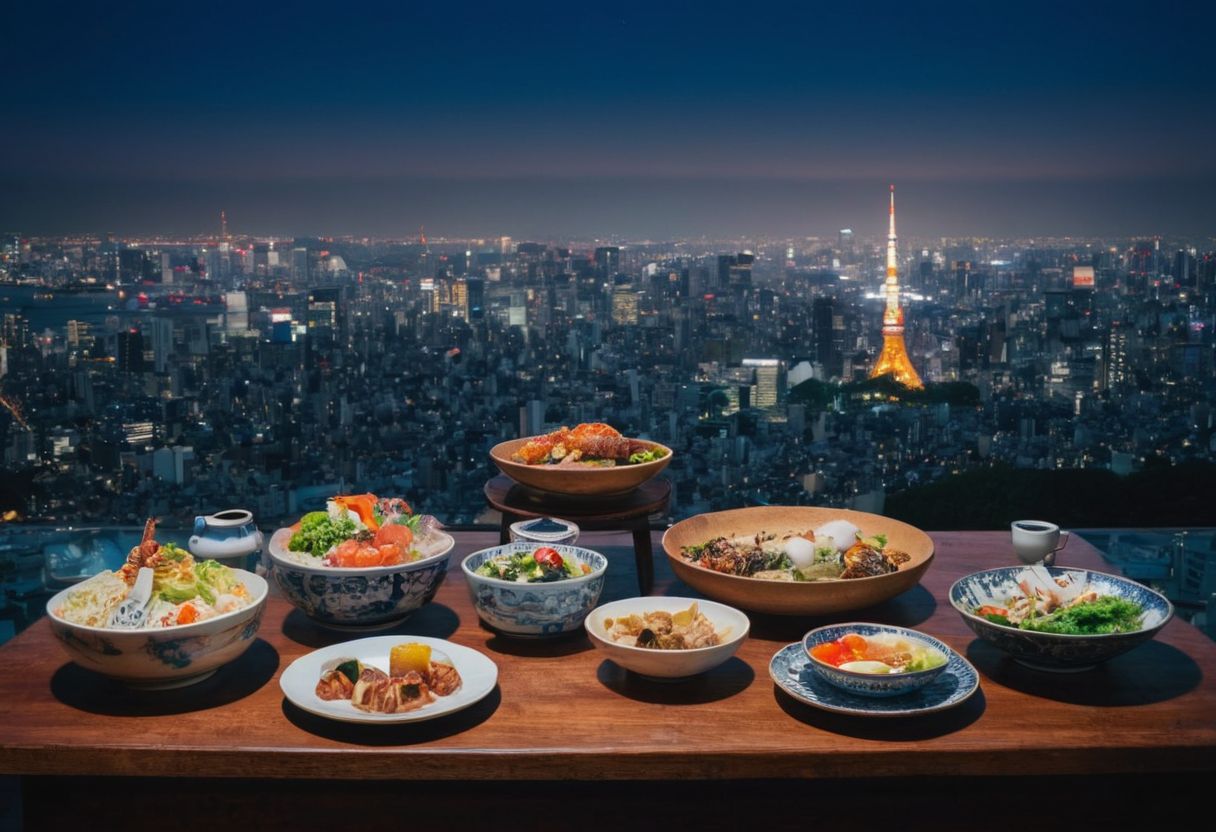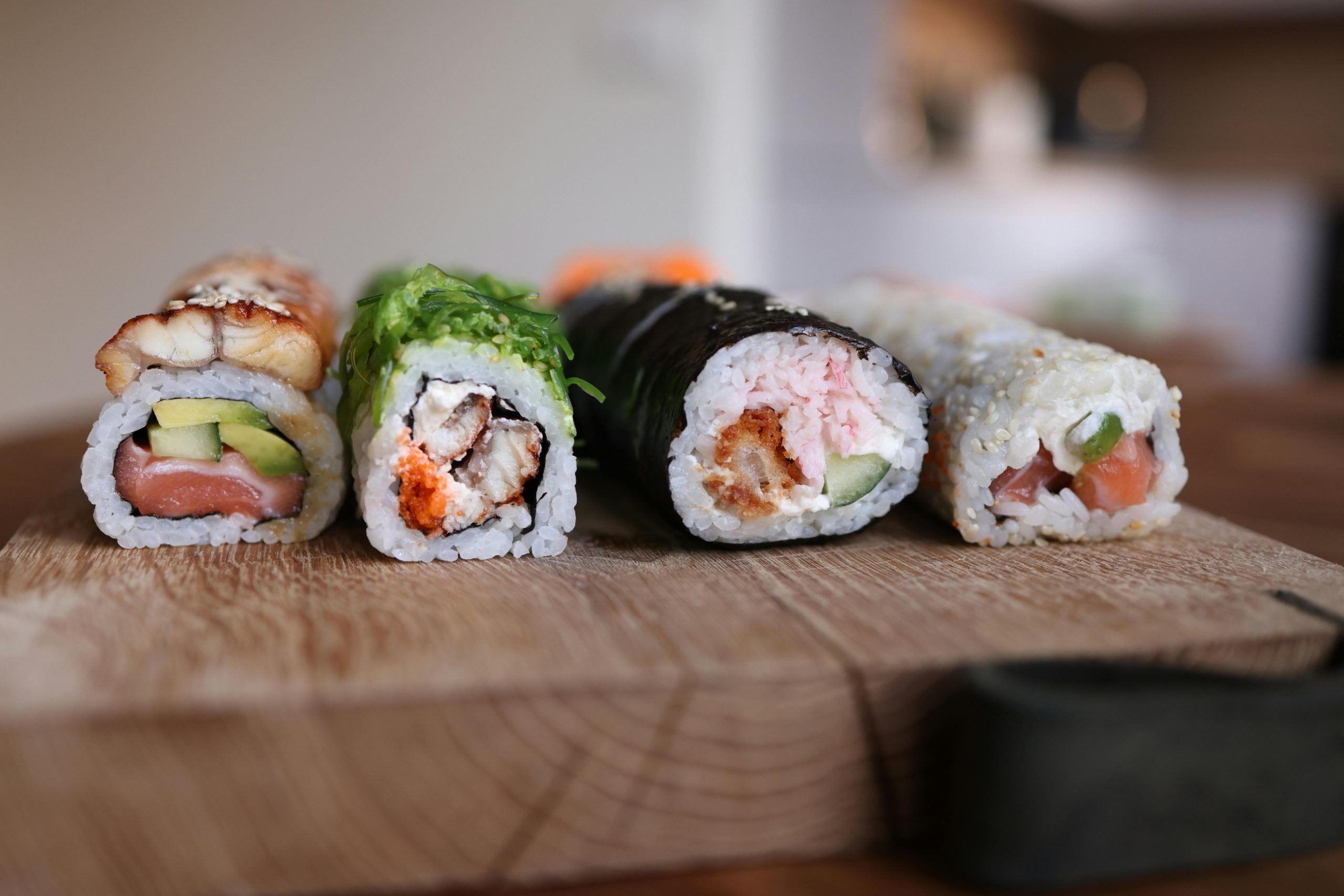Ever wondered how to bring the captivating art of Japanese grilling into your own kitchen?
Finding the right technique and understanding the cultural significance behind hibachi can be quite challenging.
Hibachi, traditionally a heating device in Japan, has evolved into various forms including a charcoal-heated cooking stove known as shichirin and an iron hot plate used in teppanyaki.
This blog will guide you through preparing a traditional hibachi dinner at home, understanding its historical and cultural context, and even exploring hibachi’s culinary delights in Zurich.
How to Prepare a Traditional Hibachi Dinner at Home
Preparing a traditional hibachi dinner at home starts with gathering the right tools. You’ll need a large griddle or a cast-iron skillet, and essential utensils like spatulas and tongs. For an authentic experience, consider using a hibachi grill, which can enhance the flavour of your dishes.
The main ingredients for a hibachi dinner typically include proteins such as chicken, steak, and shrimp, alongside a variety of vegetables like zucchini, onions, and mushrooms. Don’t forget staples like soy sauce, sesame oil, and garlic butter to bring out the rich flavours:
- Chicken, steak, or shrimp for the protein
- Zucchini, onions, and mushrooms for hibachi vegetables
- Soy sauce and sesame oil for authentic Japanese flavours
Hibachi cooking involves high heat and quick movements. Start by heating your griddle or skillet. Cook your chosen proteins first, then remove them and cook the vegetables. Finally, combine all ingredients back on the grill, adding soy sauce and other seasonings to taste. Serve with fried rice or noodles for a complete meal.
Understanding Hibachi: Definitions and Contexts
The term hibachi has various interpretations depending on the cultural context. In Japan, it traditionally refers to a heating device, specifically a bowl-shaped, open-topped container, filled with charcoal. This original use is more for heating than cooking, which contrasts sharply with the Western adaptation of the term.
In the West, hibachi often describes small, portable grills used for cooking. These are typically powered by charcoal and are known for their high heat and ability to grill meats and vegetables quickly. The versatility of the term reflects its adaptation across different cultures, each adding their unique twist to the traditional Japanese concept.
The History of Hibachi: From Ancient Japan to Global Kitchens
The term hibachi originates from the Japanese words ‘hi’, meaning fire, and ‘hachi’, a bowl or pot. This simple yet functional “fire bowl” was crucial in ancient Japanese households, primarily used for heating and later for cooking.
Over time, hibachi evolved from a domestic heating tool to a culinary asset. It began to incorporate grills over the charcoal to cook food, focusing on enhancing the natural flavours of the ingredients. This transition marked the beginning of hibachi grilling as a cooking style, distinct for its minimal use of seasonings.
The global journey of hibachi started when it moved out of Japanese homes into restaurants, eventually reaching international kitchens. This evolution was partly inspired by teppanyaki, another style of Japanese cuisine that involves cooking on a metal plate, showing how traditional methods adapt and influence modern culinary practices.
Citing Hibachi: A Guide to Scholarly References
When writing about hibachi in academic or literary contexts, it’s crucial to cite your sources accurately to acknowledge the original creators and avoid plagiarism. Depending on your field of study, you might use different citation styles. For instance, the APA (American Psychological Association) style is commonly used in the sciences, whereas MLA (Modern Language Association) style is preferred in the humanities.
Here are a few examples of how you might cite a scholarly article on hibachi in various styles:
- APA: Last, F. M. (Year). Article Title. Journal Name, Volume(Issue), Page(s). DOI
- MLA: Last Name, First Name. “Article Title.” Journal Name, vol. Volume, no. Issue, Year, pages Page Range. DOI
- Chicago: Last, First M. “Article Title.” Journal Name Volume, no. Issue (Year): Page range. DOI.
These formats help ensure that all necessary details are included and easily accessible.
Hibachi in Language: Usage Examples in Sentences
Using ‘hibachi’ in sentences enhances understanding and vocabulary, especially when discussing Japanese cuisine. For example, you might say, “We enjoyed watching the chef cook on the hibachi grill,” emphasizing the method of cooking. In another instance, “The hibachi steak was seasoned perfectly,” focuses on the food prepared using the hibachi technique. Here are some tips: – Always clarify whether you’re referring to the grill itself or the cooking style. – Incorporate adjectives to describe the experience, like ‘smoky hibachi chicken’ or ‘sizzling hibachi vegetables’. – Use the term in various contexts to show its versatility in culinary language.
Discover Hibachi in Zurich with Indulge’s Culinary Tours
INDULGE offers an exceptional opportunity to dive into Zurich’s vibrant culinary scene with a special focus on hibachi-style dining experiences. These tours are not just about tasting food; they are curated adventures that blend the art of Japanese grilling with Swiss culinary traditions. By joining one of these tours, participants will:
- Experience the unique flavours of hibachi grilled dishes
- Learn about the techniques and cultural significance of hibachi cooking
Each culinary tour is a journey through Zurich’s rich food landscape, guided by expert chefs who specialise in both local and international cuisines. This blend of expertise ensures that every dish served is not only authentic but also tells a story of cultural fusion. Highlights of the tour include:
- Tasting sessions featuring hibachi-cooked meats and vegetables
- Insights into how hibachi techniques have been adapted in Zurich
Frequently Asked Questions
What does hibachi mean in food?
In the context of food, “hibachi” refers to a style of Japanese grilling that uses a small, portable grill powered by charcoal. This method is known for its high heat and ability to quickly grill meats and vegetables, enhancing the natural flavours of the ingredients. The term has evolved from its traditional Japanese meaning of a heating device to a popular cooking style in both Japan and internationally.
Why do Americans call it hibachi?
Americans refer to the small, portable grills used for cooking as “hibachi” due to the adaptation of the term from its original Japanese context, where it was primarily a heating device. In the West, hibachi has come to describe these charcoal-powered grills that are used for high-heat cooking, reflecting a cultural adaptation of the traditional Japanese concept.
Is hibachi the same as teppanyaki?
Hibachi and teppanyaki are not the same, although both are styles of Japanese cuisine. Hibachi typically involves cooking on a gridiron over a bed of charcoal, while teppanyaki is cooked on a large iron griddle. Both methods focus on minimal seasoning to enhance the natural flavours of the food, but they use different equipment and techniques.
Is hibachi a thing in Japan?
Yes, hibachi is a concept that originated in Japan. Traditionally, it referred to a heating device used in Japanese homes. Over time, it evolved into a culinary tool where grills were incorporated over the charcoal to cook food. This traditional use has grown into a broader culinary style both within and outside of Japan.








